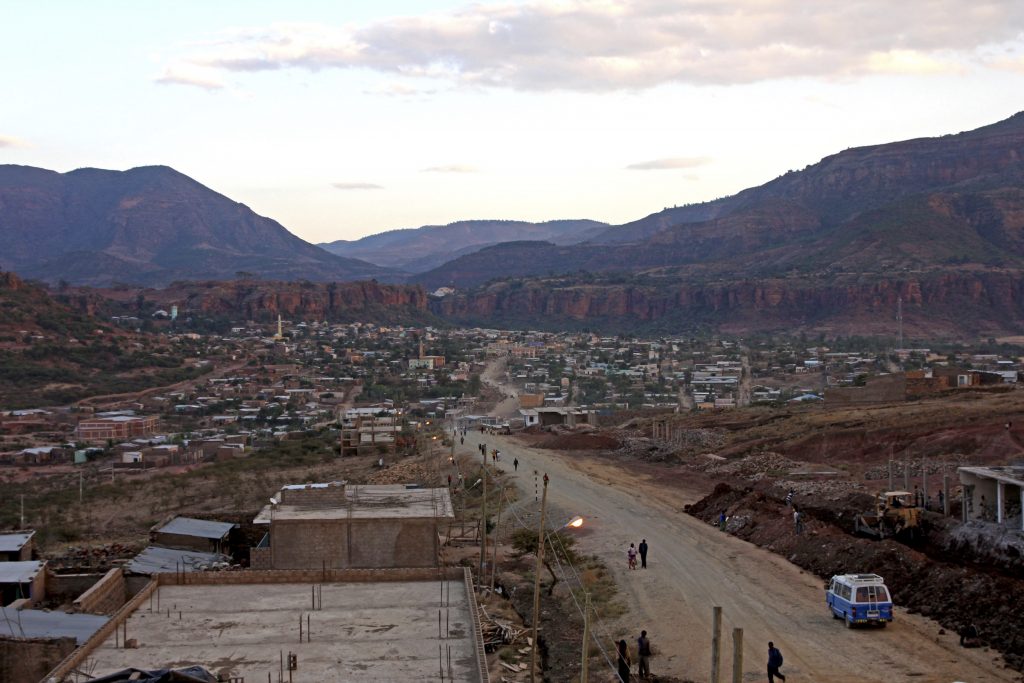It’s been over four months since the Ethiopian national military invaded the Tigray region of northern Ethiopia. The fighting continues, and the situation has deteriorated into a major humanitarian crisis, marked by mass killings, food shortages, a collapsed health care system, and the flight of at least 60,000 Tigrayan refugees into Sudan. Estimates of how many people have been internally displaced range from hundreds of thousands to over two million.
At 110 million people, Ethiopia is the second-most populous country in Africa. Tigrayans are an ethnic minority that comprises about 7% of the country’s population. Their regional political party, the Tigray People’s Liberation Front (TPLF), has wielded a disproportionate amount of power in Ethiopia in recent decades, dominating the national ruling coalition from 1991 until 2018, during which time an official system of ethnic federalism inextricably linked ethnicity and politics.
The TPLF made many enemies during its years in national leadership; a period characterized both by Ethiopia’s rapid economic growth and infrastructure development and by tremendous repression of individual rights. After current Prime Minister Abiy Ahmed took power, he embarked on a series of reforms that earned him international praise. At the same time, tensions were brewing. Many Tigrayans were expressing skepticism that Ethiopia was trending in the right direction.
When TPLF forces attacked the national military’s Northern Command in early November 2020, Abiy sent Ethiopian government forces to Tigray. They were joined by Amhara militia groups and, within weeks, by Eritrean forces coming from the north.
The Ethiopian government’s official position is that “rule of law measures” or “law enforcement operations” are being carried out against the TPLF “criminal clique.” They claim military operations ended in November. However, the ongoing, full-scale military incursion enveloping the entire Tigray region contradicts this explanation; arresting TPLF leaders doesn’t require airstrikes, artillery, and months of troop deployments.
The perception among Tigrayans is that they are being targeted in an ethnic cleansing campaign. This view is reinforced with each new report of indiscriminate shelling of residential neighborhoods and each new revelation of unspeakable brutality directed towards civilians by armed forces. The total disregard shown by the Ethiopian government for Tigrayan civilians’ welfare has been a notable theme of the crisis.
Despite a deluge of evidence that Eritrean soldiers have a significant presence across much of northern Tigray, including video documentation and countless firsthand accounts, the Ethiopian government has made no attempt to protect its citizens from their rampage, insisting that the Eritrean forces are not there.
Those like me, who were previously Peace Corps Volunteers in Ethiopia (RPCVs), have been touched by the conflict in a unique way. With some exceptions, most of us do not have family ties to Ethiopia or identify with any particular Ethiopian ethnic group, and none of us are affiliated with any Ethiopian political party. What we do have are deep personal ties to communities where we spent years of our lives. RPCVs who lived in Tigray find ourselves anxiously waiting for news of the fates of people we care about; our friends, neighbors, colleagues, and former students back in the place we once called home, the place where my Tigrayan friends took to calling me zihawna (“our brother”) and wudi adinna (“son of our country”).
In our conversations in recent years, some of my former students expressed doubts about whether they would be safe if they attended university outside Tigray; they feared that being Tigrayan would make them targets for retaliation by those who harbored grievances against the TPLF. When I returned to Ethiopia in 2018, I saw that this trepidation was widespread. I noticed increased security measures in rural Tigray that didn’t exist during my Peace Corps days.
Now, all their worst fears are being realized. The government-imposed telecommunications blackout of Tigray (now only partially lifted) slowed, but did not stop, the gradual flow of information about conditions on the ground to the outside world. Journalists’ access to Tigray is substantially restricted, and some of those who have been able to enter have been targeted for arrest. Meanwhile, humanitarian organizations have inexplicably been blocked from accessing most of the region.
The current situation in Tigray raises many questions. What is the actual objective of the national government’s military offensive, given that it’s clearly wider in scope than the mere arrest and capture of TPLF leaders? What is the purpose of unleashing Amhara militias and Eritrean forces on the civilian population? Why shut down telecommunications access for millions of people? And what will the future of Ethiopia look like when the war ends?
The world will be watching for the answers.
Thor Hong (MPP ’15) was a Peace Corps Volunteer in Ethiopia from 2011
to 2013 and a coordinator for the Young African Leaders Initiative
from 2014 to 2015. He lives in Washington D.C.


Comments 2
Solveig Nilsen — March 28, 2021
Grateful for your account. Information is so hard to come by. I was PC in Maichew in the late sixties......a long time ago, but still feel connected to Tigray and people. Dismayed by recent events.....
KD — October 30, 2021
I was a volunteer in Megab, close to Howzen. Ive been to Abi Adi many times. Its now almost a year and reports are that food has completely run out. Unlike Rwanda, there seems to be no army that will come in to stop the ethnic cleansing.